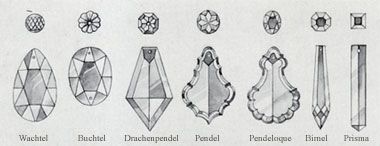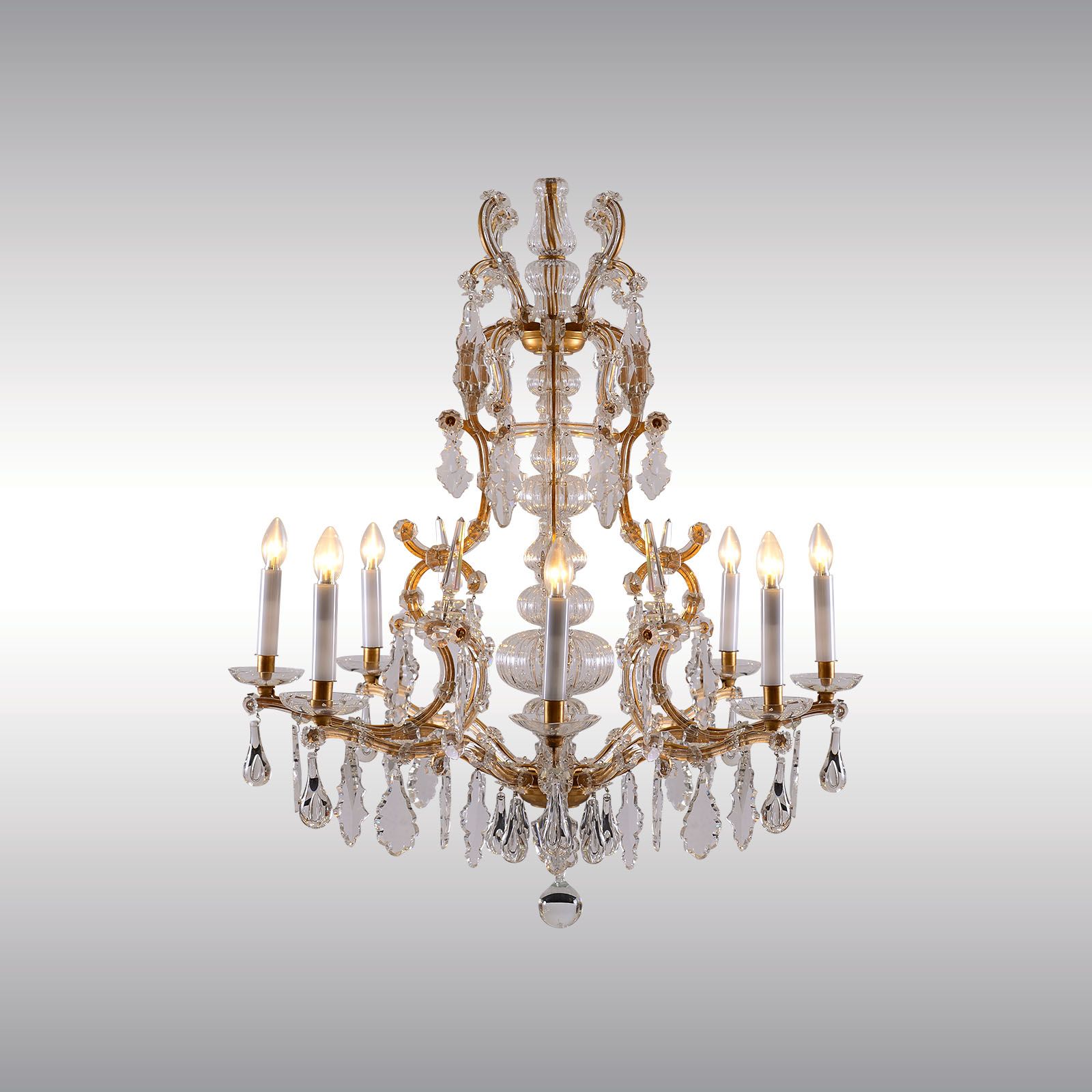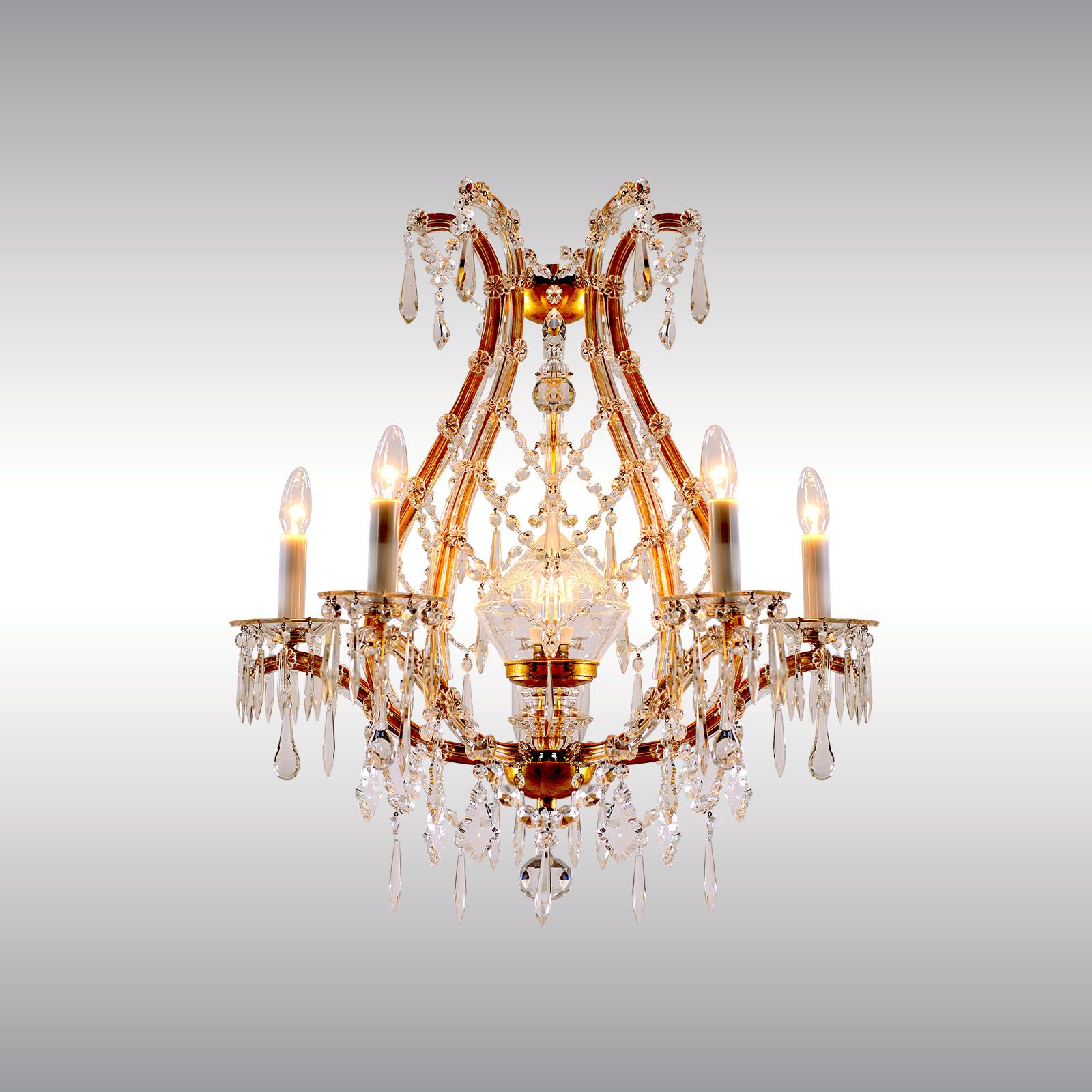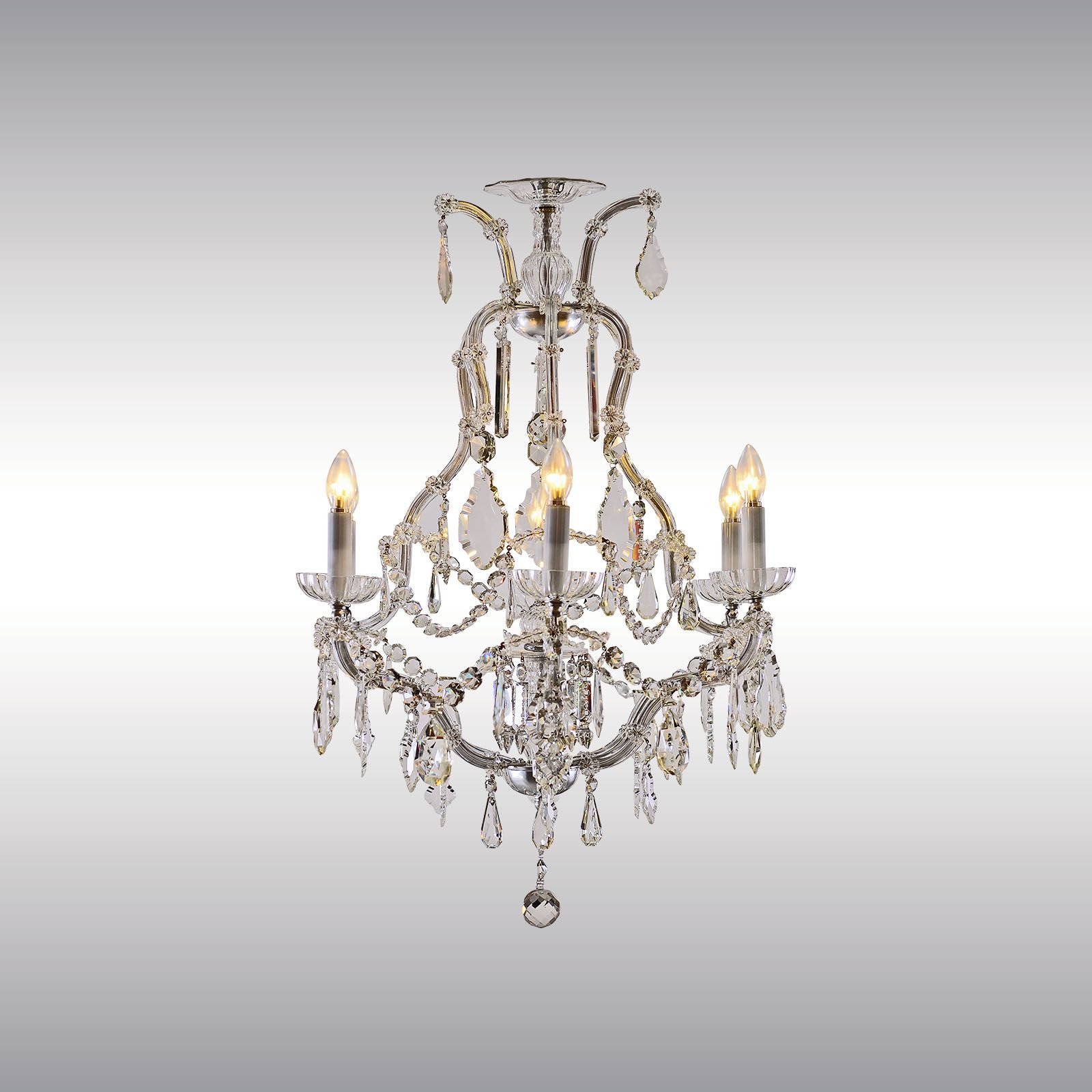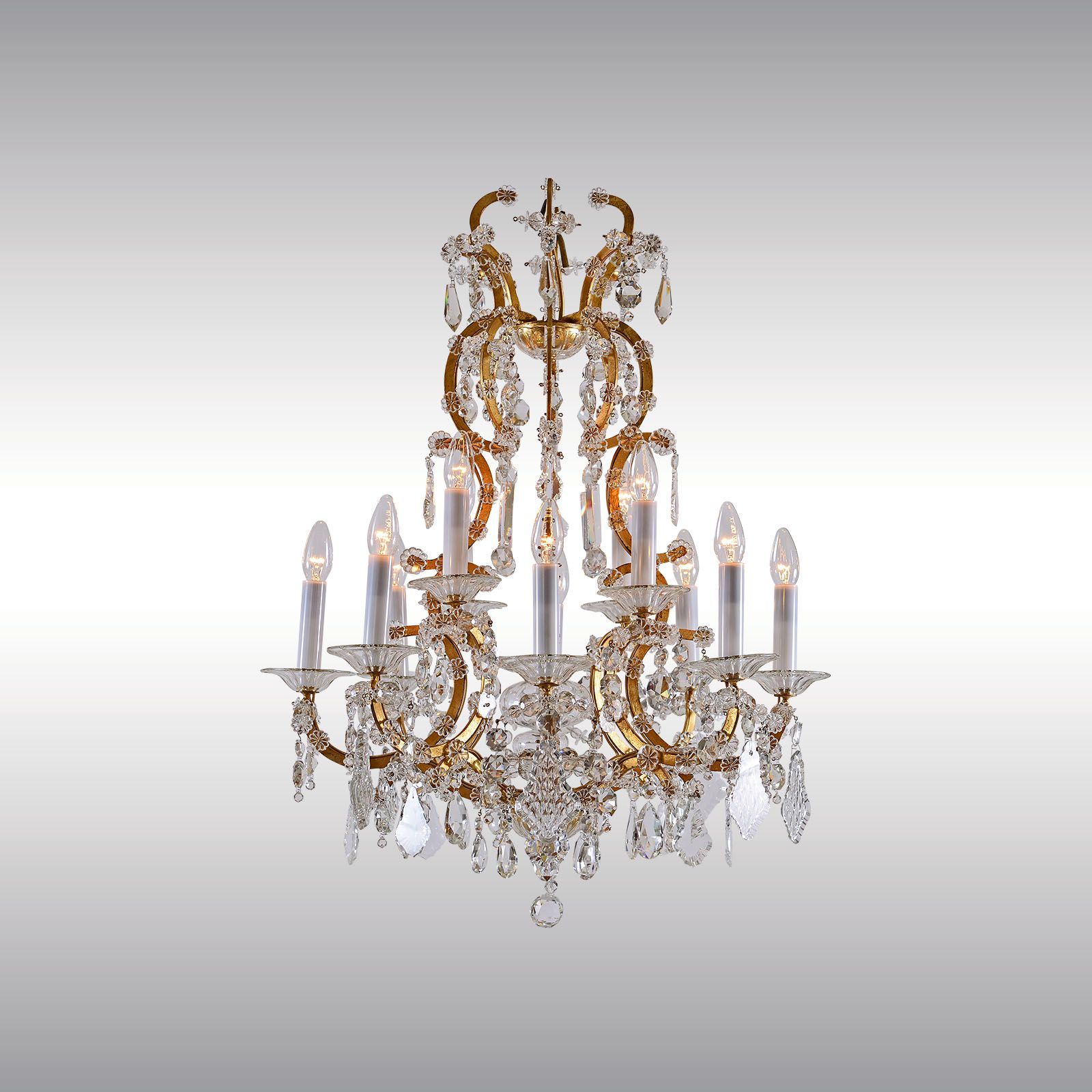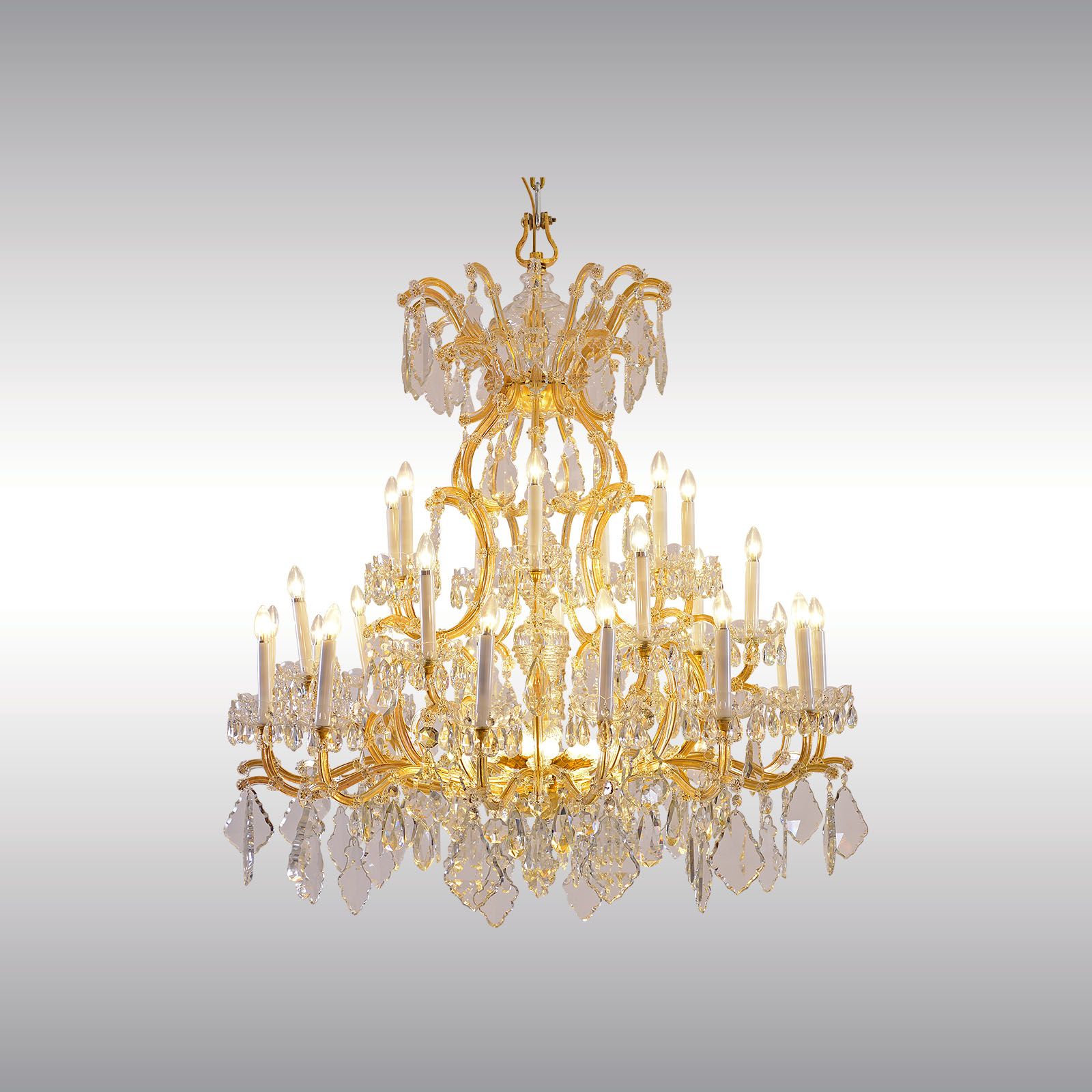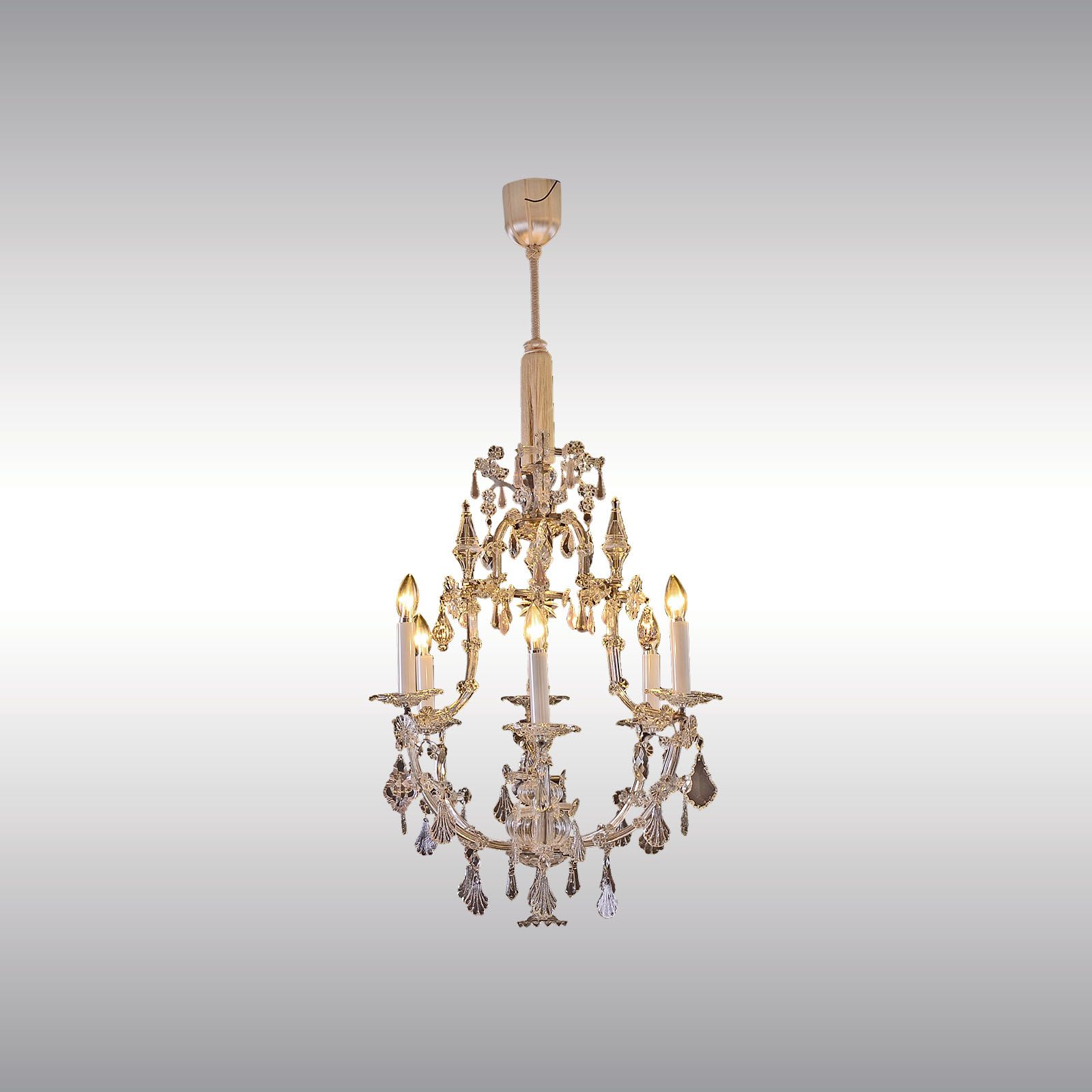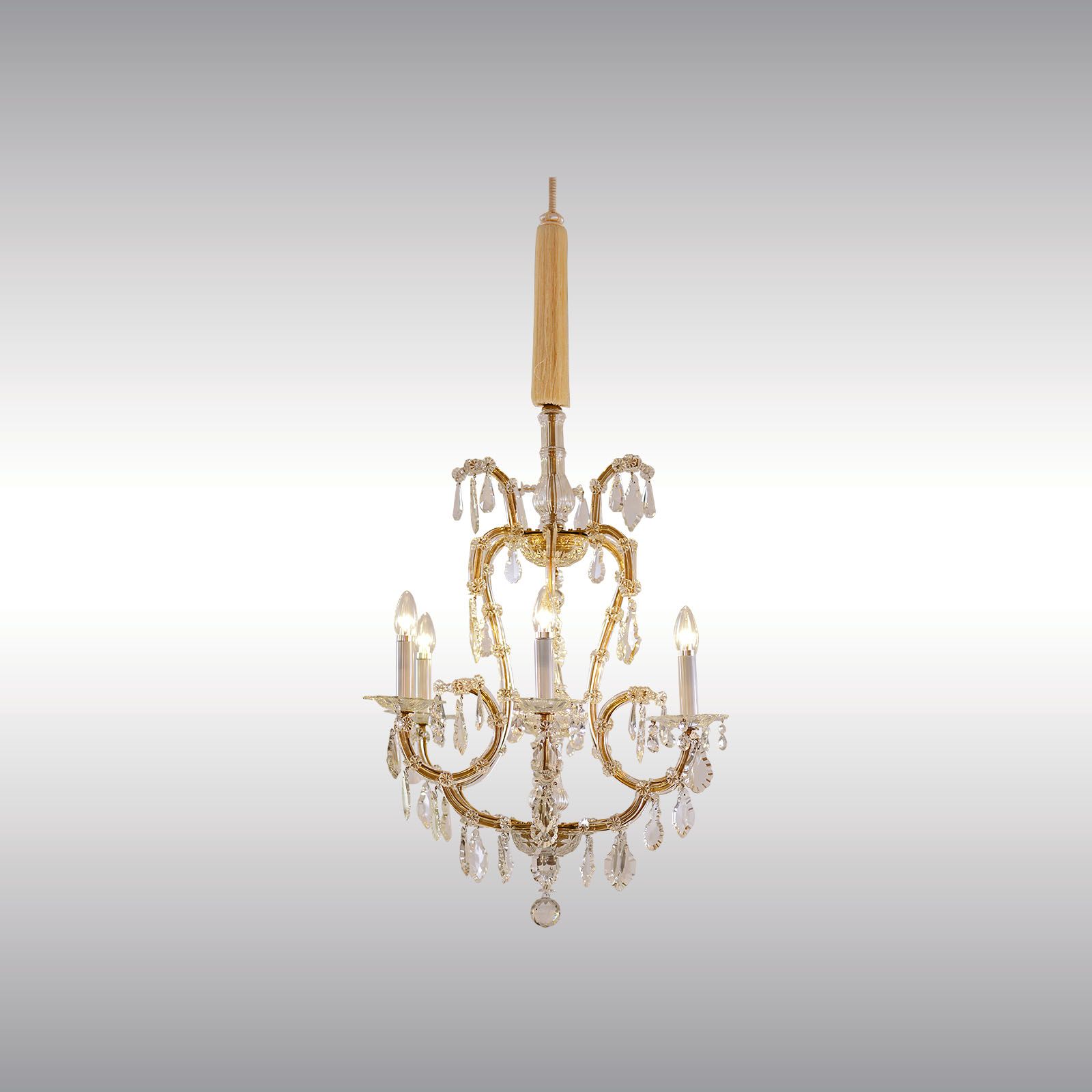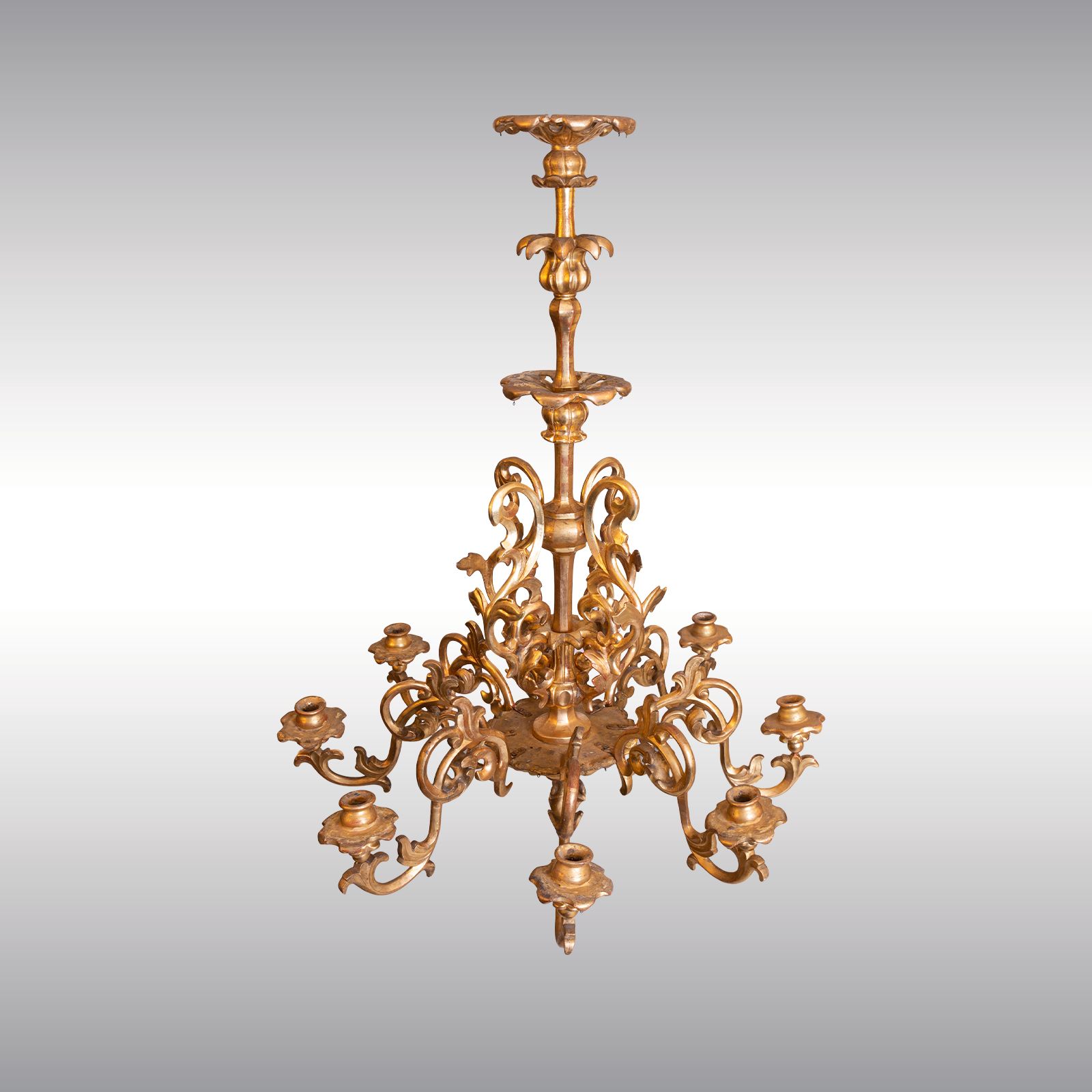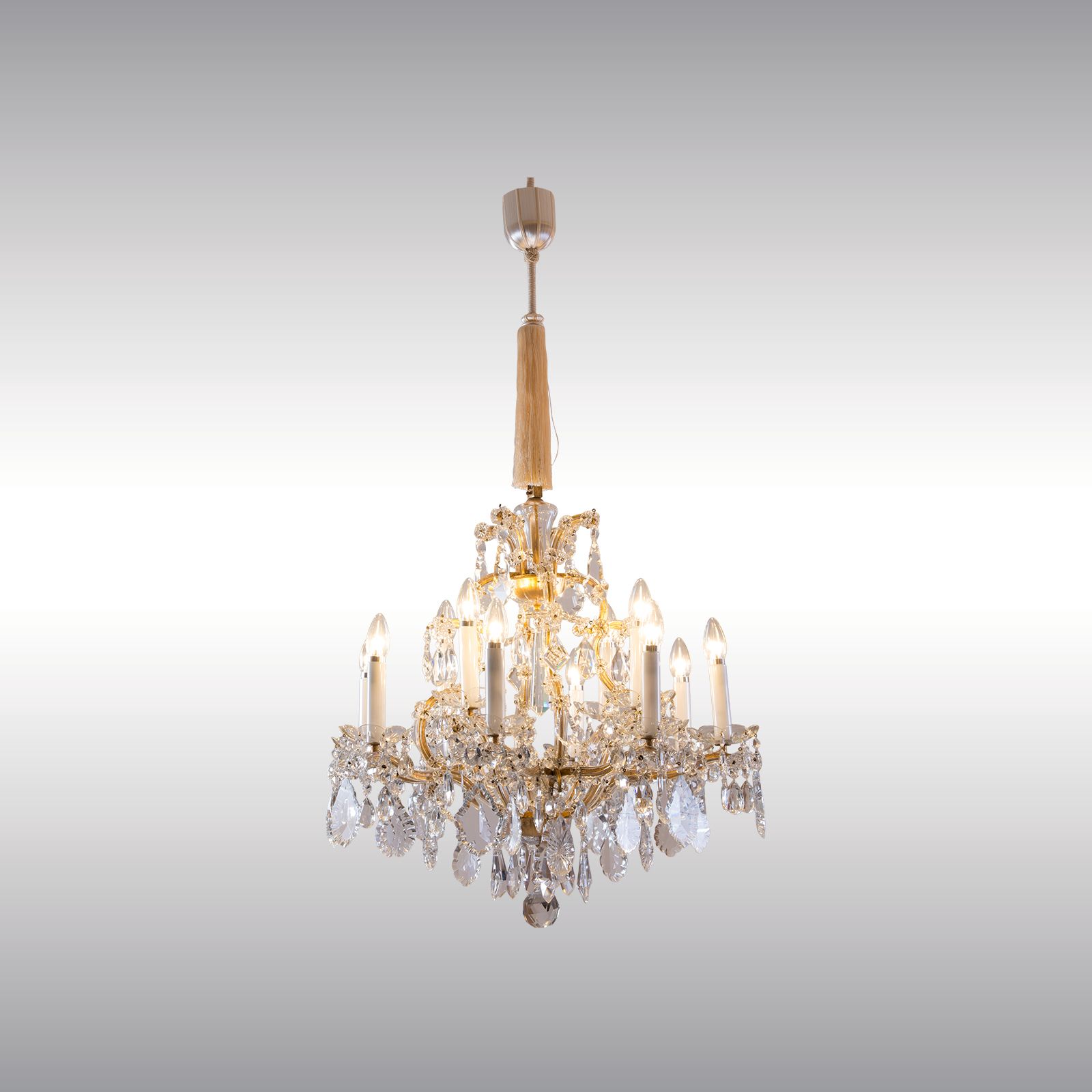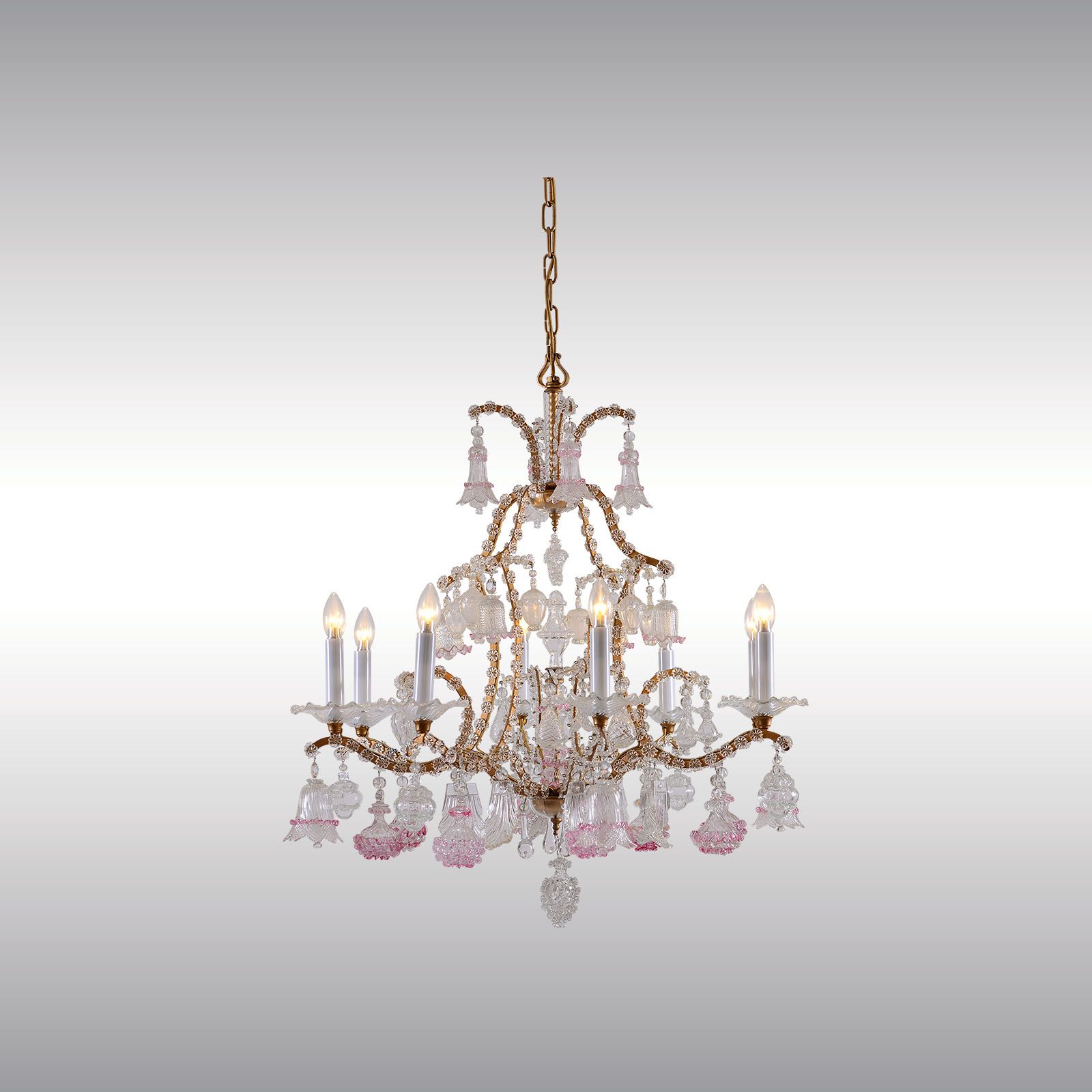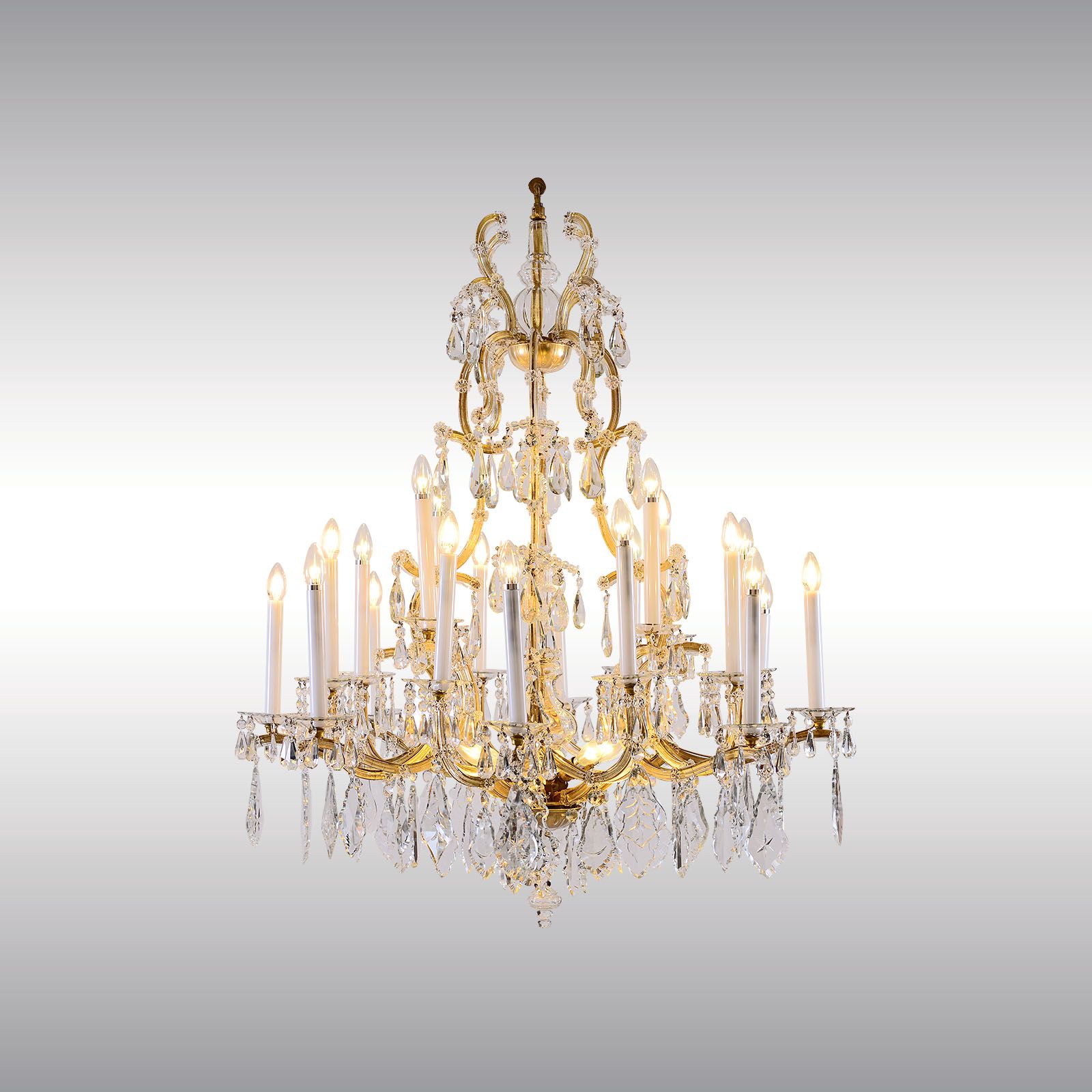Maria Theresia Chandeliers
From the 16th century on, berg-crystal was used in Italy for chandeliers.
In the 17th century, metal-arms, gilded or bronzed and covered with hand-cut acanthus-leaves from berg-crystal, decorated with countless pearls and cords.
In France later this art was continued and modified based on the Louis-quatorze-crown.
End of the 17th century shortage of money leads to a new technique took place, the metal arms were now made in bronze and crystal-glass.
In Austria around 1730 as a competitor to the French crown, the so called "Maria-Theresia-Lüster" was created and established as a new style.
The basic set-up was a metal-frame, made of hand-forged iron, fire-gilded or cinned and covered with glass-stripes. The connections were covered with glass-rosettes.
In the center of the basket-like construction are hand-blown optical or cut pyramid-like structures to fill the space.
The hanging from then are unchanged until today and are called: "Wachtel, Buchtel, Pendel, Birnel and Prisma".
The Austrian Maria-Theresia-Chandeliers have two forms: the high French form or the wide Viennese form.
